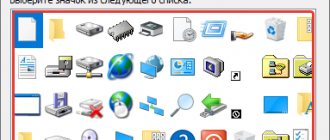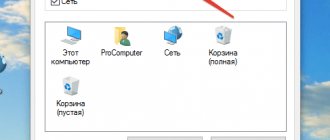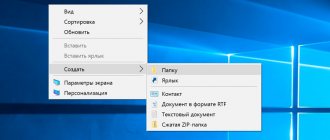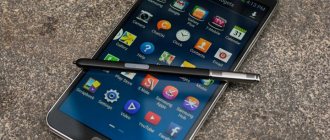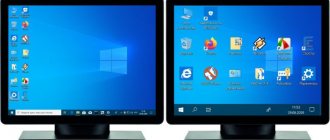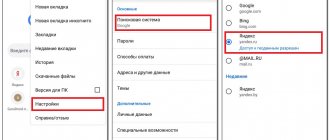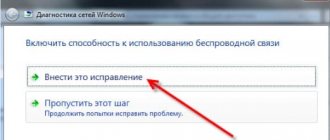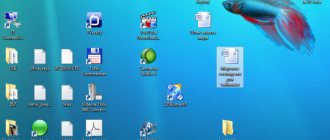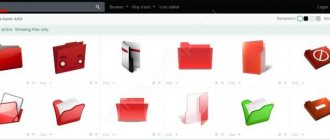Standard or third-party icons in ico format
First, you need to decide what icons you need: classic ones from Microsoft, which are already stored in the PC memory, or third-party images. In the second case, you must first create a picture yourself or find an image on the Internet. The main condition is that it must be small and have an ico extension.
You can find ready-made icon files with different designs on third-party resources and download them from there, and then install them in any of the following ways, depending on the type of icon (folder, application shortcut, or main Windows icon). To search, use Google or Yandex services: enter the query “Desktop icons for Windows 10” in the line. The variety of icons available for download on the Internet is quite large: copyrighted, themed, standard for certain versions of Windows, etc.
You can change the icons for all shortcuts at once using an icon pack - a separate collection of icons packaged into a single file with a dll extension. Such packages can also be downloaded from various sources. However, be careful when searching for and downloading such files: trust sites that indicate that the files have been scanned by an antivirus. Otherwise, you risk downloading a malicious program along with the file.
Photo gallery: icon sets for the “Desktop”
Shortcuts on the “Desktop” can be non-standard, but they must be in ico format
On the Internet you can find many original icons for folders
Aero icon pack is suitable for users who love modern design
The choice of icons on the Internet is large: from simple to thematic and custom ones
Process of creation
So, every computer program has its own little system image that appears on the desktop if you want to create it. However, the same program on the desktops of different computers will be accompanied by the same image. It’s good if this image completely suits you. However, unfortunately, some users are faced with the fact that installed icons cause negative emotions and irritation.
Of course, you shouldn’t work with such negativity; your productivity will be low and your mood will be constantly terrible. It's better to change the picture to a suitable icon for the shortcut that will please your personal creative imagination.
How to change the appearance of the main icons on Windows 10
The main Windows icons on the “Desktop” are icons with the names “Trash”, “My Computer”, “Network”, “User Files”, “Control Panel” and some others. They are placed on the “Desktop” by default after installation. You can independently determine which of them should be present on it and which should not. You also have the right to change their appearance in the system “Options” window or using third-party utilities.
Through the Windows Settings window
The easiest way to change the appearance of the main icon is to go to the system parameters window:
- To make the “Settings” window appear on the display, the easiest way is to simultaneously press two keys: Win + I. But this combination may not work. In this case, there is another way: click on the “Start” button in the lower left corner of the screen, and in the menu itself, select the second icon from the bottom - the gear.
Click on the gear icon in the Start menu
- We find ourselves in a large “Options” menu with many sections. We need the last tile in the first row - “Personalization”.
In the “Options” window, click on the “Personalization” section
- The desired section with tabs will open. You can launch the same window in another way: click on the “Desktop” on the area free of icons, and in the context menu select the very last item - “Personalization”.
Click on the “Personalization” item in the context menu of the “Desktop”
- Go to the “Topics” block.
Immediately go from the “Background” tab to “Themes”
- In the right column with links to other windows and sections, click on the line “Desktop icon settings”.
Click on the “Desktop Icon Settings” link on the right side of the window
- A small window will open on top of the “Settings” - select the desired icon from the menu with the left mouse button, for example, “This computer”. Next, click on the “Change Icon” button.
Click on the icon you want to change and click on the “Change Icon” button
- In the third window, select an icon from the list of standard Windows icons or upload your own using the “Browse” button.
Select an icon from among the available ones or upload your own using the “Browse” button
- If you chose the second option (uploading your icons), the Explorer window will appear. We are looking for the folder with the desired icon file in ico format. Click on the “Open” button and then click OK.
Find the required ico file in Explorer and click on “Open”
- In the “Icon Options” window, first click “Apply” for all changes to take effect. If you want to change the icon for other main Windows icons, repeat the same procedure for each of them. Click on "Apply" again and then on OK to close the window.
Using special utilities
There are many applications from various developers that allow you to change the icons of both main shortcuts and other icons, for example, folder icons, beyond recognition. In programs, you can change individual icons or all icons at once, that is, install an entire package.
IconPackager: convenient and fine-tuning the appearance of icons
IconPackager is a product from Stardock, a company that develops utilities for customizing the Windows desktop interface. This utility comes pre-installed with several icon packs. It is also possible to upload your own and change icons in the available collections, that is, create your own unique packages.
The utility supports Windows versions higher than version seven. The downside is that it is paid, but at the beginning it offers a month of free testing. Although the interface is in English, using the application is quite convenient:
- Open the official website of the application developer. To download the installer, click on the blue Try It Free button.
Click on the blue Try It Free button to download the installer
- Run the installer and install the program by following the simple instructions on the window.
- Click on the Finish button so that the application window appears on the display.
Click on Finish to close the “Setup Wizard” and open the program window
- To start using the trial version, click on the Start 30 Day Trial button.
Click on Start 30 Day Trial to start using the program for free for a month
- If you want to download a third-party icon that you previously downloaded from the Internet, in the Look & Feel tab, click on the Icon Package Options drop-down menu. Select the penultimate item Add Icon Package, and then Install from disk.
Click on Add Icon Package and then select Install from disk to download your collection
- In Windows Explorer, find the file with the icon pack and click on “Open” - the collection will be added to the list of currently available ones.
- You can also select a topic from those presented in the list. Let's try to install, for example, Delta.
Click on the Delta package below
- Click on Preview to preview all the icons in this pack. If you like them, close the second window and feel free to click on the Apply icons to my desktop button.
Click on Preview to preview the entire icon collection
- If you want to get your old Windows icons back in place, just apply the first theme on the list - Windows Default Icons.
- In the Colors tab you can change the color, hue, and brightness of the icons.
In the Colors tab, configure the color scheme of the existing icons
- Using the I want to adjust the color of my Icon Package item, you can adjust the icons to the theme of your “Desktop” and the color of the “Taskbar”. For example, they can completely change the color to red if there is a Windows theme with that tint. After all changes, click on Apply icons to my desktop.
Icons can take on the color of the current Windows theme
- In the Live Folders section you can put separate icons for folders - live icons. To do this, check the box to the left of Always use the Live Folder icons selected below. Then simply select the folder type.
In the Live Folders block, select individual icons for folders
- The Customize tab allows you to create your own icon packs. To change a specific icon, click Change this Icon.
The Customize section allows you to create your own collections and change those presented in the program
- In a new small window, select from the available ones or add your own icon using the Browse button.
In the Change Icon window, select an icon from those available in the menu or upload your own using the Browse key
- When all changes to the package have been made, click on Save Icon Package.
Save changes to the icon pack using the Save Icon Package option
- In the small window, confirm that you want to make changes to the package. After this, all settings should be successfully saved.
Click "Yes" to confirm your intention to save the changes
- There are additional settings in the Settings section. In particular, you can determine which Windows icons need to be changed and which ones should not be touched. Here you can enable changing the mouse pointer Cursors.
In the Settings tab you can configure changes for certain types of icons: folders, files, main Windows icons and others
Video: how to install new icons using the IconPackager program
Se7en Theme Source Patcher: free utility and large selection of packages
The application is designed to replace all classic Desktop icons, local hard drives, folders, and Control Panel icons. Initially, the program was created for the “seven”, but now it supports other versions of Windows, in particular, our “ten”.
The program uses the popular 7z compression format. The downside of the utility is that it does not initially have built-in icon packs. You need to download all collections on the same site from where you download the application, and then add them yourself to the utility database for further use. Nevertheless, the selection of packages on this resource is very large.
The advantage of this program is that it is free. Before replacing icons, the utility creates a restore point and a backup copy of system files so that you can return all Windows icons to the classic ones:
- Go to the official website of the application. Click on the “Download” button.
Click on the "Download" button to download the executable file of the program
- Your browser will download the archive - open it, and in it, right-click on the file and in the menu click on “Extract to...”. Select a folder and unzip the archive.
Click on “Extract to specified folder” in the file’s context menu
- Find the extracted file, right-click on it again and in the context menu click on the “Run as administrator” link.
In the context menu of the unpacked file, click on “Run as administrator”
- Allow this application to make changes on your PC by clicking “Yes” in the system window that appears. The application does not require installation, so its window will open immediately.
Click Yes to allow the program to make changes to your device
- Pre-select and download the themes you like from the same site.
Download your favorite icon pack from the developer’s website
- In the application window, click Add a Custom Pack.
Click on the Add a Custom Pack button
- In Windows Explorer, select the downloaded archive with the icon pack and click Open.
Find the file with the icon pack and click “Open”
- The collection will appear in the menu. At the bottom of the window there will be a Start Patching button. Click on it. The utility will ask if you need to create a restore point. Be sure to create it - click “Yes”.
Give permission to create a backup before installing new icons
- Wait for the procedure to complete. After this, you need to reboot the device twice for the changes to take effect.
- Icon packs from this developer contain not only icons, but also some other elements of the Windows interface, for example, pictures to replace the appearance of the clock, date, and even the Task Manager window. If you don’t need them, click on Extra before installing the collection. In the Option Menu, uncheck unnecessary items and click Save.
In the Option Menu, remove unnecessary items that you do not want to change and click on Save
- If you want to restore classic Windows icons, click the Restore button in the lower right corner in the program window. In the new window, check the box next to the first item and click OK.
To return the default Windows icons, click Restore and then OK
You must install a new icon pack on a clean system, that is, on classic icon images in Windows, and not on third-party icons. Therefore, do a preliminary restoration using the Restore key if you have icons other than the standard ones.
Video: how to install icons using the Theme Source Patcher utility
IconTo: application with built-in instructions for use
IconTo is a free application from the developer AleXStam, which can change icons for system elements, folders, hard drive partitions, or even groups of them.
In IconTo you can change the icons of folders, system objects and hard drive partitions
It has the following advantages over other utilities:
- More than 300 built-in icons. There is also the option to upload your own icons.
- Instructions for installing icons: at the bottom of the window you will see hints.
- There is a conversion of png, jpg, ico formats, as well as the option of extracting images from files in dll, exe and some other formats.
- The program interface is entirely in Russian.
IconTo is suitable for all versions of Windows, from Windows 98 to modern Windows 10. The size of the downloaded installer does not exceed 15.1 MB, so the utility can be used on computers with a small amount of memory. The application is available for download on the developer's official website.
Change desktop icons (This PC, Recycle Bin, Network, Profile Folder)
In any version of Windows, you can place on your desktop: My Computer, Recycle Bin, Network, Profile Folder, Control Panel. To do this, in Windows 7 and 8, right-click on an empty space on the desktop => select “Personalization” => in the window that opens, select “Change desktop icons.” In Windows 10, you need to go to the Start menu => Settings => Personalization => select “Themes” on the left side, and open “Desktop Icon Settings” on the right side.
Under Desktop Icons, you can check the boxes for the items you want to see on your desktop, then click OK. In the same “Desktop Icon Settings” window, select the element for which you want to change the icon and click on “Change Icon”.
You can select an icon from the standard ones (the default icons are located in the files C:\Windows\System32\imageres.dll and C:\Windows\System32\shell32.dll) or click “Browse” and find some of your icons in any other folder.
Icons can be downloaded, and then selected in this window, or selected in any folder on your computer (if they are there), you can also find an application that has an icon, the one you like, and select it in this window. You can choose any EXE, DLL, ICO file with the icon you like. When you select the desired file with the icon, click “Open”.
Select the icon you like and click “OK”.
Click on "OK".
If you want to return the standard icon, go again to “Desktop Icon Settings” => select the element for which you want to return the standard icon and left-click on “Normal Icon”.
Click "OK" again.
How to change folder icon on Windows 10
If you want to highlight a folder against the general background of icons to make it more recognizable, follow these steps:
- Right-click on the folder shortcut. In the menu that appears, click on “Properties”.
In the folder context menu, select “Properties”
- A window with various sections will immediately appear on the display - go to the “Settings” tab. In the last section, click on the “Change icon” button.
In the “Settings” tab, click on the “Change icon” button
- Select an icon from the available ones: Scroll the list of icons to the right to see all the shortcuts. If you have your own image with the required ico format and you want to put it exactly, click “Browse”.
Select an icon from those offered or click on the “Browse” button if you have your own icon
- In the additional Windows Explorer window, find the folder where the image is stored. Left-click on it to select it, and then click on “Open”.
Find the desired icon as a file with the .ico extension in Windows Explorer
- For a convenient search, you can use the line with a magnifying glass - just enter the name of the icon file or the ico extension.
Enter ico in the search bar and find the file you need
- To save changes, click OK in the window with a list of available icons. After this, the folder icon will change.
How to replace all folder icons at once
To change the appearance of all folders, you need to resort to a more complex method - editing the registry in the system window. However, this method is not recommended for beginners: it is better to use special programs described in the “Using special utilities” section in this article. If you are already a confident PC user, then you can perform manipulations in the system window:
- To open the “Registry Editor” system window, press the Win and R keys simultaneously - a small “Run” panel will open with a single line “Open”. In it we type the command regedit. For the system to execute it, click on OK or press Enter.
In the Run window, type the command regedit
- In the next window, click “Yes”. This will give permission to the “Registry Editor” to make changes on the computer.
Click Yes to allow System Utility to make changes to your device
- First, let's make a backup copy in case the registry was edited incorrectly. On the top panel, find the “File” item and left-click on it. In the menu that appears, click on “Export”.
In the “File” menu, select “Export”
- In the new window that opens, select the folder in which the copy will be stored. Give the appropriate name to the file. Then click “Save”.
Name and save a copy in any folder
- Now you can start editing yourself. Double-click on the third main branch - HKEY_LOCAL_MACHINE.
Open the HKEY_LOCAL_MACHINE folder by double clicking
- We go one by one to the following blocks in the same left part of the window: Microsoft - Windows - CurrentVersion - Explorer - Shell Icons.
The Shell Icons folder should be located in the Explorer section
- If you did not find the last Shell Icons folder, create this section yourself: right-click on the Explorer section, select “Create” in the context menu, and then click on the “Section” item. Let's name it accordingly.
If you don't have a Shell Icons folder, create one using the context menu of the Explorer section
- Click on Shell Icons. In the right panel, right-click on an empty area to open the menu. In it, select “Create”, and then “String parameter”. We indicate the number 3 as the name for the new registry entry.
Click on “Create” and then “String Parameter”
- Right-click on it and select “Edit”. You can also simply double-click on it with the left mouse button.
Click on “Edit” in the context menu of the newly created parameter
- In a small window, in the line for the entry value, insert the path to the file, where its name and ico extension must be indicated. Click on OK.
In the “Value” line we write the path to the ico file, which should be set as an icon
- If you have a 64-bit system, the path to the final Shell Icons folder in the left pane will be slightly different: Wow6432Node - Microsoft - Windows - CurrentVersion - Explorer. Next, we repeat the same steps as for the 32-bit system.
- Close all windows and reboot the device. After starting the OS, you will see that the icons of all folders have changed.
How to make an icon for a shortcut
Let's try to create an icon first and then change it. After all, you won’t be able to put a regular image in PNG or JPEG format on a label, since they are not supported.
So, I want to make an icon for the “classmates” label, I found a suitable image through the Google Images service. Now we need to convert this image to ICO format, first making it square. Otherwise, it will turn out distorted. Let's switch to the online service https://image.online-convert.com/ru/convert-to-ico. Click review and download the file. Then in the additional settings we set the dimensions to 128 by 128 pixels. Click “Convert File”.
Please note that shortcut icons can only be in the following sizes: 16x16, 32x32, 64x64 and 128x128 pixels.
After a few seconds of waiting, a dialog box will pop up asking you to save the finished result. Now be sure to create a “Pictures for Shortcuts” folder on drive D and save or move all the necessary images there. After all, if you replace the shortcut icon and then delete this picture, then after restarting the computer it will disappear from the shortcut. This way, everything will be stored in one place and will not be deleted by mistake.
The first stage is completed. We were able to create an icon for the shortcut and save it to a specific folder.
Changing the application shortcut icon
If you're tired of your programs' old shortcut icons, try replacing them. For example, let's take the shortcut for the popular Google Chrome browser:
- We look for the desired icon on the “Desktop” (in our case it is the “Google Chrome” icon). Right-click on it to open a context menu with a list of options. Select the same item as in the case of changing the folder icon - “Properties”.
Click on “Properties” in the context menu of the Google Chrome shortcut
- You will immediately be taken to the desired tab - “Shortcut”. Click on the middle button “Change icon”.
In the “Shortcut” section, click on the “Change Icon” button
- A window similar to the one in the instructions for changing the folder icon will appear on the display. Here, however, there will not be such a large selection of icons. We specify not the system library as the source, but the executable file chrome.exe. We make a choice, for example, in favor of the original yellow icon. Click on OK.
Select an icon from the available ones or upload your own file with the ico extension
- In the shortcut properties window, first click “Apply”. The system will ask permission to make changes. Click on the “Continue” button.
Click on the “Continue” button to save all changes
- After that, click on OK - the window will close and the icon icon will change.
- If you want to change the shortcut icon to your own, use the Browse button to upload your own file with a third-party image.
How to change a file icon?
Let's do it the same way! Right-click on the file, go to the “Properties” section, but here go to the “Shortcut” tab, click “Change Icon”.
By following these simple rules, you can gradually change all the folder and file icons to the ones you like best. The folder icons are all the same, so they most often need to be replaced. Then you will be able to distinguish them not only by name, but also by color and shape.

